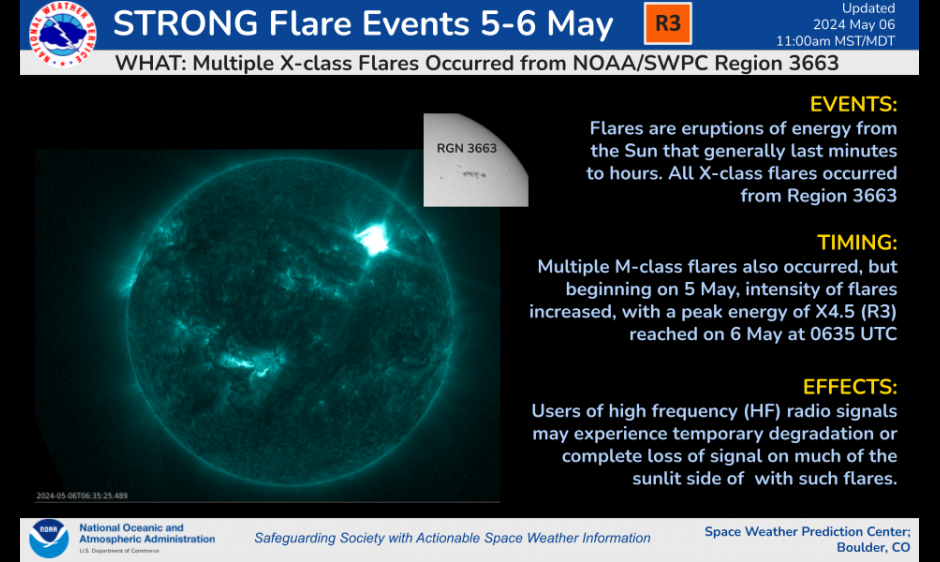
The Sun unleashed a series of X-class flares (R3; Strong) from 5 to 6 May, 2024. Multiple M-class flares (R1-R2; Minor-Moderate) events have also occurred since May 5th. However, intensity of the flares first breached R3 thresholds on May 5th at 2:01 EDT (0601 UTC) with an X1.3 flare. An X1.2 flare occurred later at 7:54am EDT (1154 UTC). The most recent X-class flare reached X4.5 on May 6th at 2:35am EDT (0635 UTC) - the strongest of this series of flares. However, this was not the strongest flare of Solar Cycle 25 thus far - that honor is still held by an X6 flare on February 22nd, 2024. The current source of the strong flare activity is NOAA/SWPC Region 3663, a complex sunspot cluster over the northern solar hemisphere. There remains a continuing likelihood of additional M-class flares, with a good chance of additional X-class flares over the next three days. Continue to monitor our webpage for the latest information and forecasts.